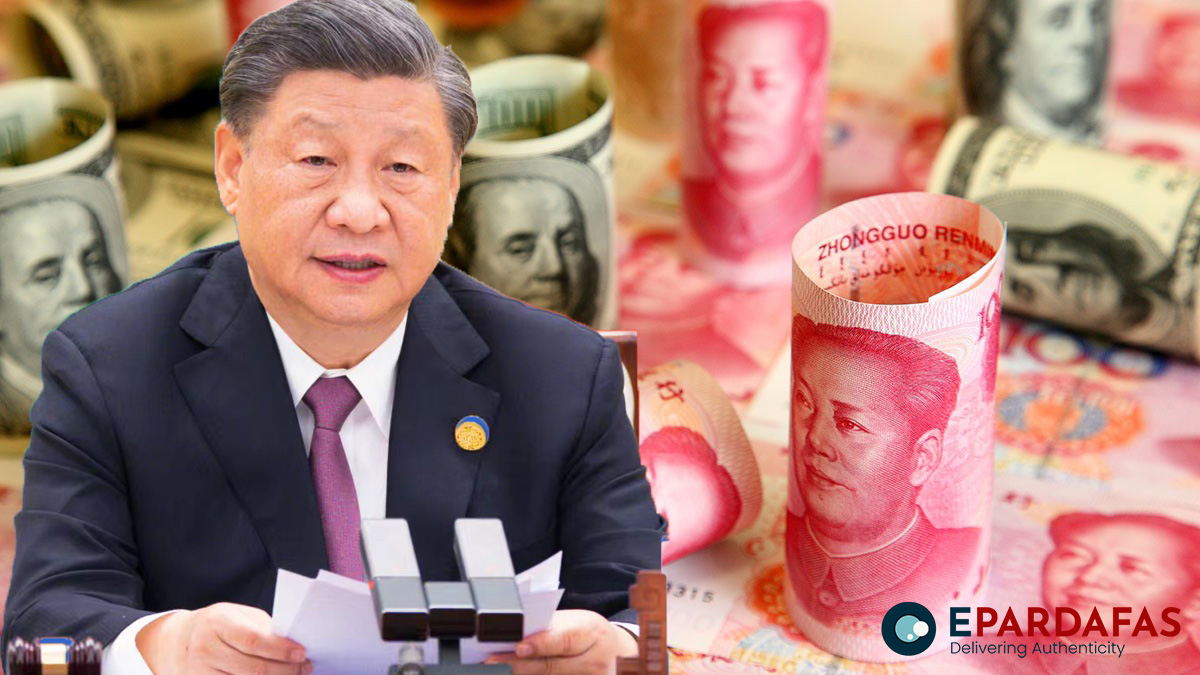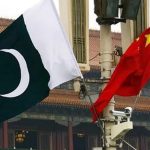
Analyzing Challenges in the Chinese Economy: Moody’s Outlook and Red Sea Shipping Concerns
China, the world’s largest economy, teeters on the brink of collapse, attributed to its ambitious pursuits under President Xi’s administration. Rather than experiencing a gradual decline, the nation faces a rapid economic downturn.
Simultaneously, the international community is responding by imposing restrictions on China’s expansive plans. Despite initiatives such as the Belt and Road Initiative, Global Security Initiative, and Global Cultural Initiative aimed at solidifying China’s position as a global power, the country finds itself in a challenging position marked by the failure of these projects.
Countries like Sri Lanka, Pakistan, and various African nations, which have previously borrowed from China, now express their inability to repay loans. The realization has dawned that China’s grand promises may remain unfulfilled, leaving borrower nations in a precarious financial situation.
This analysis delves into President Xi’s recent statements and positions on three key agendas directly impacting China’s economy.
Issue One: Economic Slowdown and Property Crisis
China’s economic woes are escalating as Moody’s, a leading credit ratings agency, issues a warning about the country’s increasing debt pile amid an economic slowdown and a property crisis. Moody’s has downgraded its outlook on the Chinese government’s debt from stable to negative, raising concerns about the broader risks facing the world’s second-largest economy.
The government’s response to these challenges includes plans to boost stimulus spending as it grapples with rising youth unemployment, weakened global demand impacting the manufacturing sector, and deepening issues in the property market. Major construction companies are facing insolvency, leading to halted projects and stranded customers. Local governments, heavily reliant on land sales for revenue, are also feeling the strain.
Moody’s has highlighted the potential risks associated with supporting local governments and state-owned enterprises, warning that this could adversely affect China’s fiscal, economic, and institutional strength. The negative outlook indicates the possibility of a future credit rating downgrade, which could impact investor confidence and influence interest rates.
Despite the downgrade in outlook, Moody’s has maintained China’s A1 rating for long-term national debt, reflecting expectations that the government will manage economic challenges in an orderly fashion. China’s finance ministry remains optimistic, asserting that the country’s long-term prospects remain unchanged.
Issue Two: Fiscal Pressure Amid High Debt Levels
Moody’s Investors Service has altered its outlook for China’s sovereign debt to negative, citing concerns about high levels of debt among regional and local governments. The agency warns of potential fiscal pressure on the government as it may need to provide financial assistance to financially stressed entities, including regional and local governments and state-owned enterprises.
While Moody’s has affirmed China’s current A1 rating, it emphasizes the increased risks tied to lower medium-term economic growth and the ongoing downsizing of the property sector. The Chinese Finance Ministry expresses disappointment with Moody’s assessment, stating that concerns about economic growth prospects and fiscal sustainability are unnecessary.
Analysts note that China’s central government has historically shown fiscal strength, but challenges arise as regional and local authorities struggle to service their debts. The central government’s potential intervention may be crucial in addressing these issues.
Issue Three: Attacks Impact Red Sea Shipping Route
Recent attacks on Israel-linked vessels could disrupt the key Red Sea shipping route, impacting China’s car exports to Europe. The Red Sea, vital for trade between Asia and Europe, faces security challenges, prompting cargo ships to consider alternative routes. The attacks, including the seizure of the Galaxy Leader, a vehicle carrier, may force ships to divert south, adding two weeks to the journey and increasing export costs by 20%.
China’s car exporters, utilizing carriers from Ray Car Carriers, may face limited options to avoid risks. The current geopolitical situation and rising freight prices contribute to challenges in the shipping industry. This comes as Chinese automakers are already grappling with increased freight costs, further straining the global auto supply chain.
As the international community closely monitors these economic developments, the potential longer-term impacts on China’s economy and global trade remain uncertain.














Comments